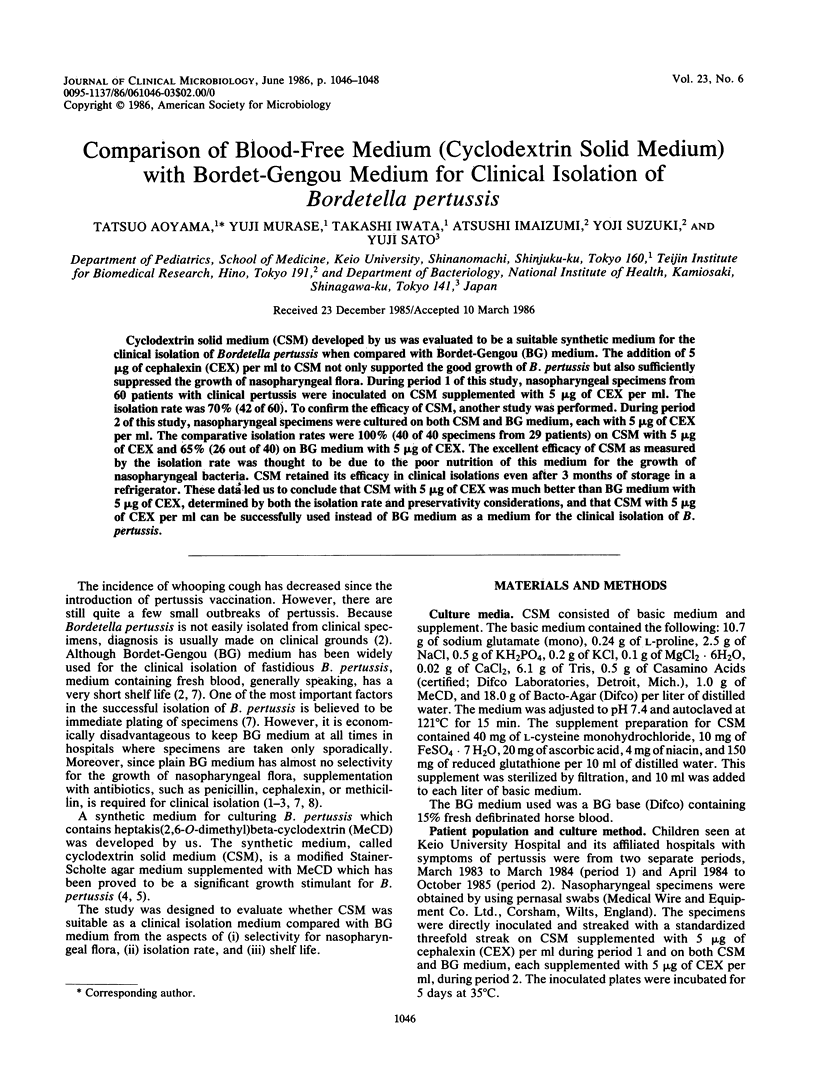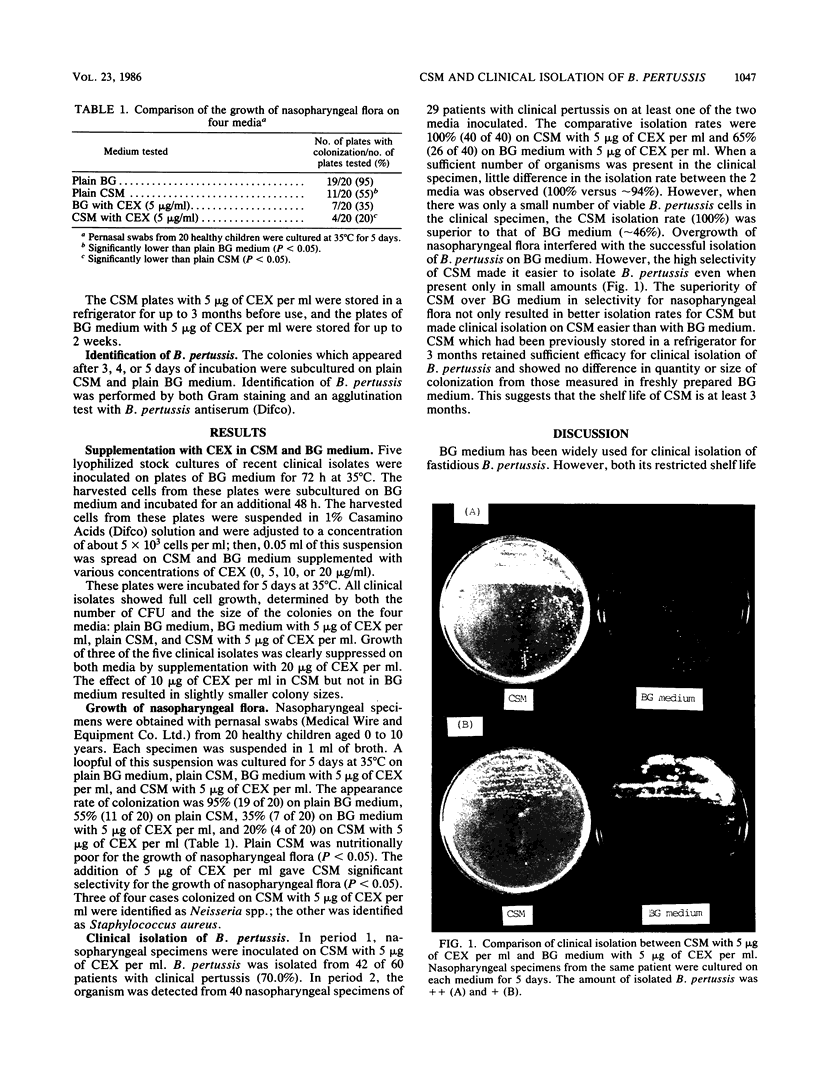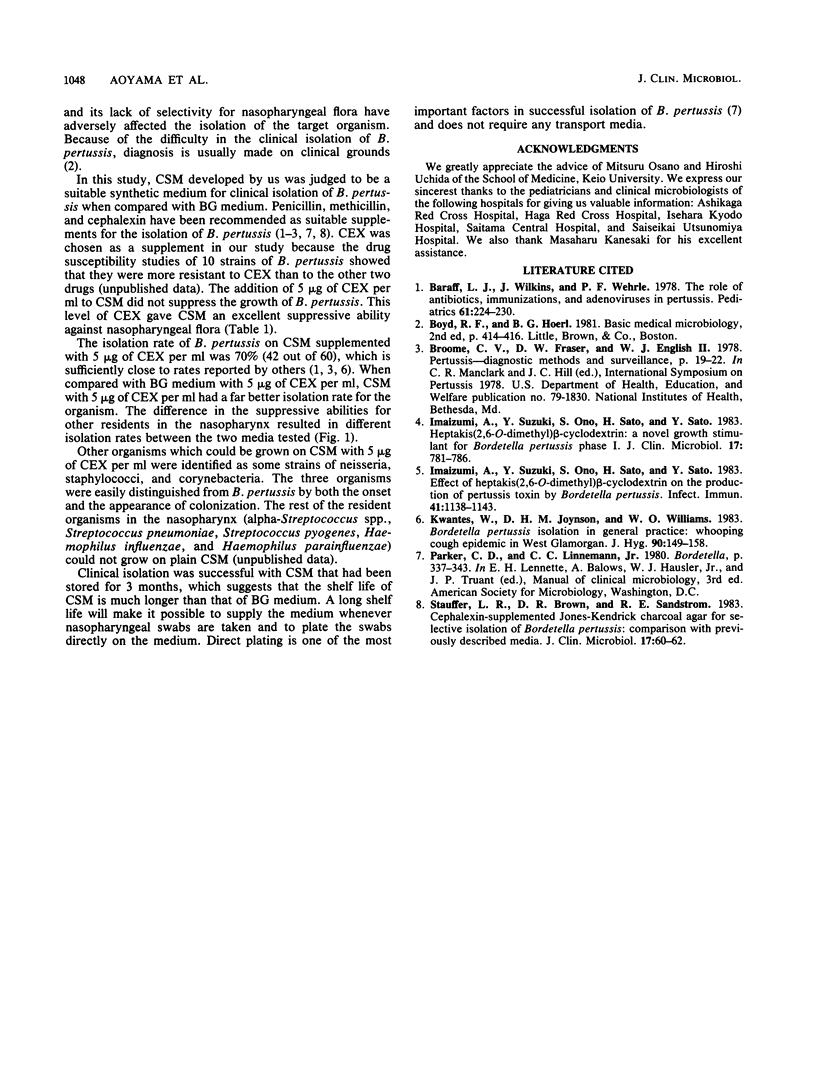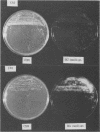Abstract
Cyclodextrin solid medium (CSM) developed by us was evaluated to be a suitable synthetic medium for the clinical isolation of Bordetella pertussis when compared with Bordet-Gengou (BG) medium. The addition of 5 micrograms of cephalexin (CEX) per ml to CSM not only supported the good growth of B. pertussis but also sufficiently suppressed the growth of nasopharyngeal flora. During period 1 of this study, nasopharyngeal specimens from 60 patients with clinical pertussis were inoculated on CSM supplemented with 5 micrograms of CEX per ml. The isolation rate was 70% (42 of 60). To confirm the efficacy of CSM, another study was performed. During period 2 of this study, nasopharyngeal specimens were cultured on both CSM and BG medium, each with 5 micrograms of CEX per ml. The comparative isolation rates were 100% (40 of 40 specimens from 29 patients) on CSM with 5 micrograms of CEX and 65% (26 out of 40) on BG medium with 5 micrograms of CEX. The excellent efficacy of CSM as measured by the isolation rate was thought to be due to the poor nutrition of this medium for the growth of nasopharyngeal bacteria. CSM retained its efficacy in clinical isolations even after 3 months of storage in a refrigerator. These data led us to conclude that CSM with 5 micrograms of CEX was much better than BG medium with 5 micrograms of CEX, determined by both the isolation rate and preservativity considerations, and that CSM with 5 micrograms of CEX per ml can be successfully used instead of BG medium as a medium for the clinical isolation of B. pertussis.
Full text
PDF


Images in this article
Selected References
These references are in PubMed. This may not be the complete list of references from this article.
- Baraff L. J., Wilkins J., Wehrle P. F. The role of antibiotics, immunizations, and adenoviruses in pertussis. Pediatrics. 1978 Feb;61(2):224–230. [PubMed] [Google Scholar]
- Imaizumi A., Suzuki Y., Ono S., Sato H., Sato Y. Effect of heptakis (2,6-O-dimethyl) beta-cyclodextrin on the production of pertussis toxin by Bordetella pertussis. Infect Immun. 1983 Sep;41(3):1138–1143. doi: 10.1128/iai.41.3.1138-1143.1983. [DOI] [PMC free article] [PubMed] [Google Scholar]
- Imaizumi A., Suzuki Y., Ono S., Sato H., Sato Y. Heptakis(2,6-O-dimethyl)beta-cyclodextrin: a novel growth stimulant for Bordetella pertussis phase I. J Clin Microbiol. 1983 May;17(5):781–786. doi: 10.1128/jcm.17.5.781-786.1983. [DOI] [PMC free article] [PubMed] [Google Scholar]
- Kwantes W., Joynson D. H., Williams W. O. Bordetella pertussis isolation in general practice: 1977-79 whooping cough epidemic in West Glamorgan. J Hyg (Lond) 1983 Apr;90(2):149–158. doi: 10.1017/s0022172400028825. [DOI] [PMC free article] [PubMed] [Google Scholar]
- Stauffer L. R., Brown D. R., Sandstrom R. E. Cephalexin-supplemented Jones-Kendrick charcoal agar for selective isolation of Bordetella pertussis: comparison with previously described media. J Clin Microbiol. 1983 Jan;17(1):60–62. doi: 10.1128/jcm.17.1.60-62.1983. [DOI] [PMC free article] [PubMed] [Google Scholar]



